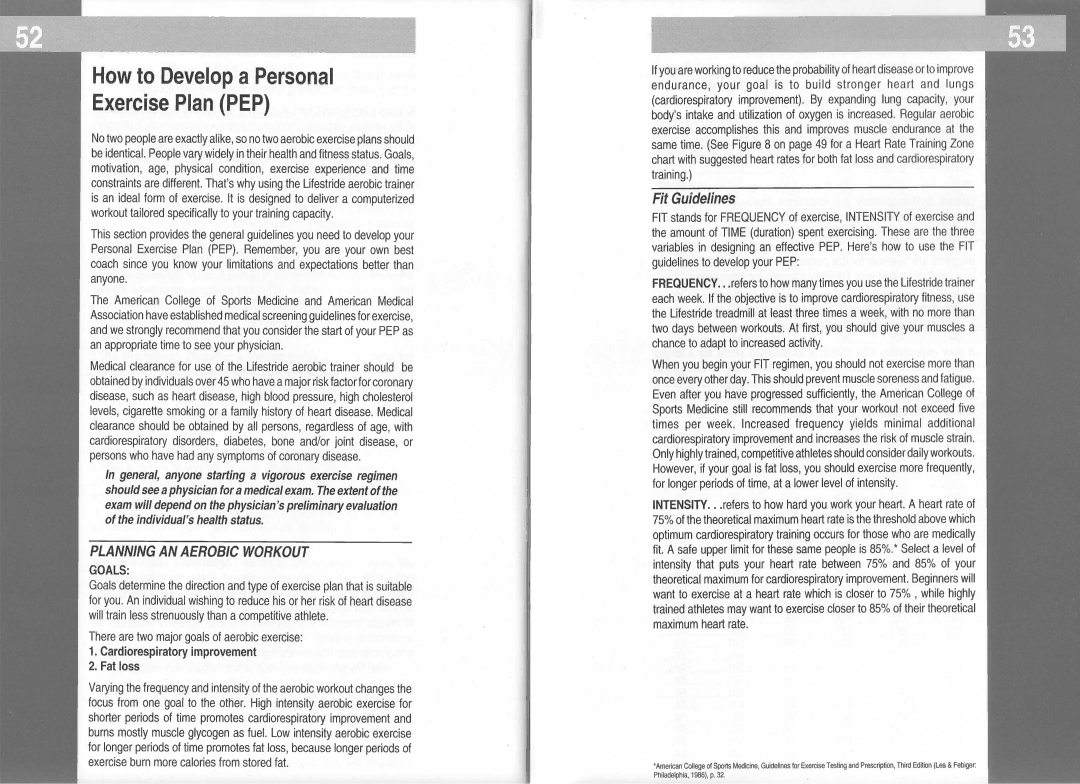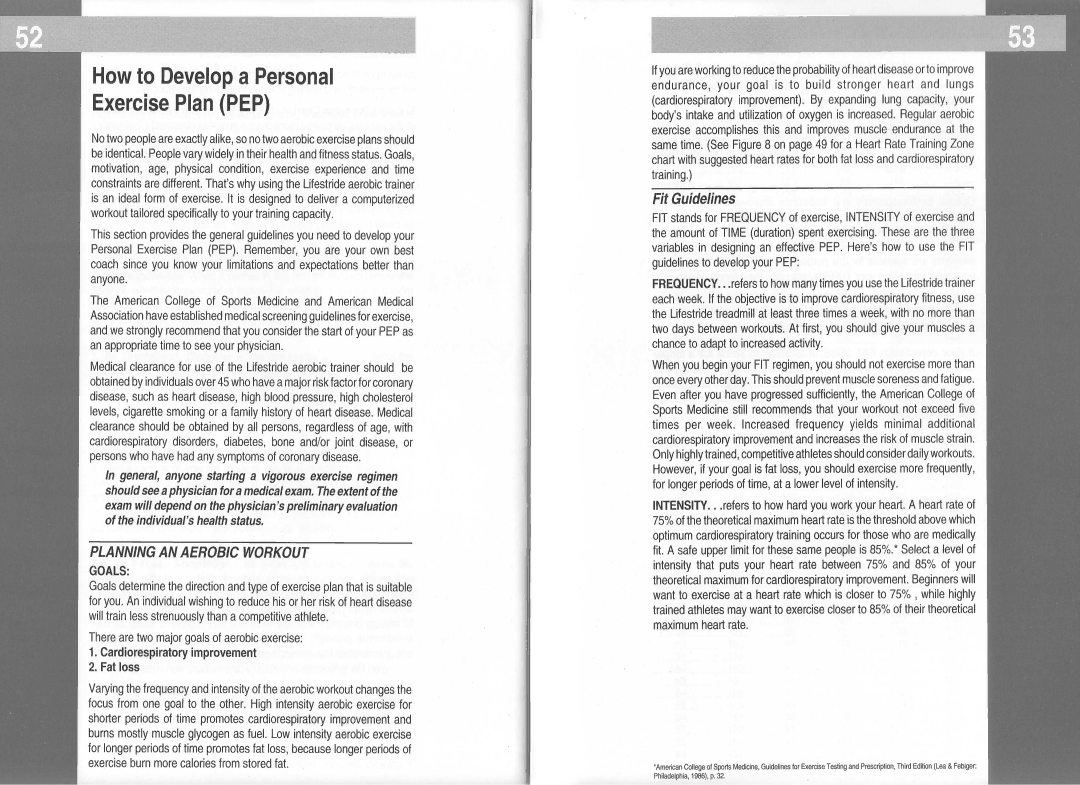Lifestride 5500 specifications
The Life Fitness Lifestride 5500 is a premier piece of fitness equipment designed to cater to both casual users and serious fitness enthusiasts. This advanced treadmill is engineered to provide a robust and reliable workout experience, making it a popular choice for both home gyms and commercial fitness centers.One of the standout features of the Lifestride 5500 is its powerful motor, which delivers smooth and consistent performance across a variety of speeds and inclines. With a top speed of 12 mph and a maximum incline of 15 degrees, users can easily tailor their workouts to match their fitness levels and goals. This level of versatility ensures that users can engage in everything from basic walking to intense interval training.
The treadmill's running surface is designed for comfort, featuring a spacious 20 by 60-inch belt that accommodates users of all sizes. This generous surface area allows for a natural stride, reducing the risk of injury while maximizing workout efficiency. Additionally, the Life Fitness Lifestride 5500 is equipped with advanced cushioning technology, which absorbs impact and reduces stress on joints.
Users will appreciate the intuitive console, which is equipped with a variety of programs and features to keep workouts engaging. The console provides feedback on essential metrics, including time, speed, distance, calories burned, and heart rate. Heart rate monitoring is facilitated by built-in sensors on the handrails, and the treadmill is compatible with wireless heart rate monitors for even more accurate tracking.
For those seeking motivation, the Lifestride 5500 includes built-in workout programs that cater to various fitness levels and goals, such as weight loss, endurance training, and heart rate training. The console also features compatibility with fitness applications, allowing users to track their progress digitally and integrate workouts into their broader fitness routines.
Durability is another key characteristic of the Lifestride 5500. This treadmill is built with high-quality materials designed to withstand rigorous use, ensuring it remains a reliable option for years to come. The sleek and modern design also makes it an aesthetically pleasing addition to any gym.
In conclusion, the Life Fitness Lifestride 5500 combines powerful performance, advanced technology, and user-friendly features to create an exceptional treadmill experience. Whether you’re a beginner or a seasoned athlete, this treadmill caters to all fitness levels, making it an excellent investment for anyone serious about their health and fitness journey.

